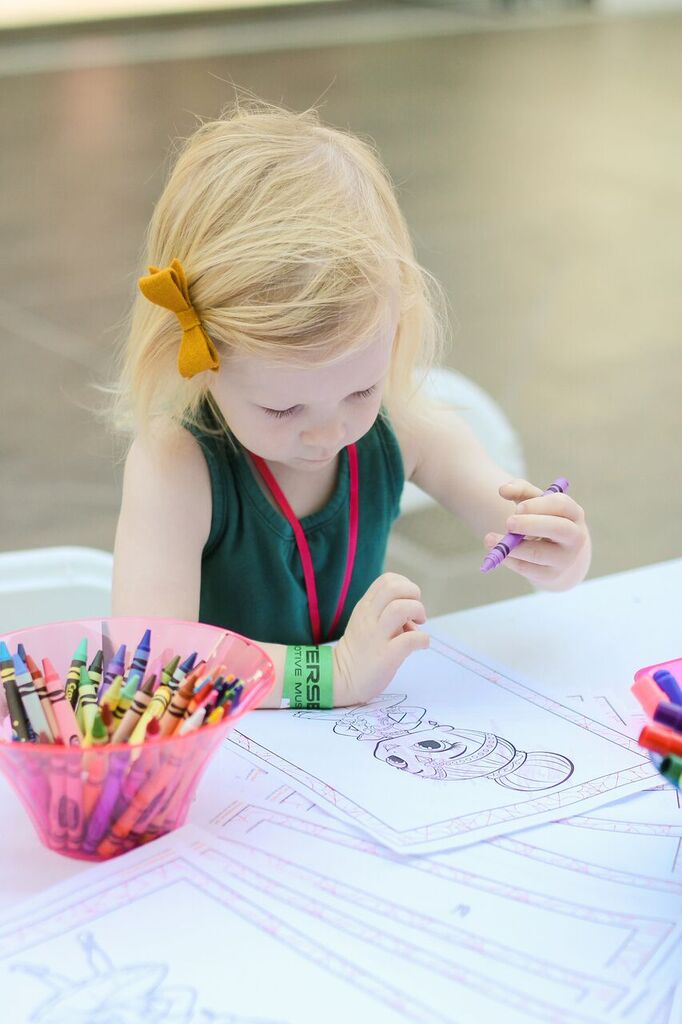Tips To Encourage Independent Play With Your Toddler
Parenting… the days are long and the years are short. One of the biggest challenges as the parent of an infant or toddler? Play time. Let's be honest, sometimes we just need a few minutes to ourselves. The best way to get that time to yourself? Create an environment and schedule where your children can creatively play and enjoy themselves. We’re talking about simple tips for facilitating creative play (without resorting to hours of television)!
These tips will help any parent facilitate creative play while also encouraging children to play independently and enjoy developmentally appropriate activities.
How to Encourage Creative Play:
Materials/Environment:
- Allow children to play with a variety of materials: The more experience children have with crayons, pens, glue, etc......the more likely they are to ENJOY using them. Art projects can be amazingly open ended, when children know how to use their art supplies. SUGGESTED SUPPLIES: crayons, markers, glue sticks, stickers, pom poms, sequins. SUGGESTED ACTIVITY: Turn Simon Says into an art game by prompting with Simon says, “draw three circles”, “use the color blue”, “add pom poms with glue.” Your little one will have fun following the directions while you can take a break in-between your prompts. If you have more than one child, it’s always interesting to see how different their drawings will be, even though they followed the same Simon Says directions.

- Utilize open-ended activities: blocks can be built forever, imaginative play never has a finish point, magnets are a never-ending experiment. SUGGESTED SUPPLIES: blocks, magnets, dress up supplies
- Create a Quiet Activity Area: a reading nook? a mini library? Even kids need downtime... build a space where they can quietly decompress without distractions, filled with books, toys and a comfortable place to sit. When a child feels like they have a space that is their own and dedicated to only play (not like a bedroom) they will view it as a familiar and fun place where they want to spend time.

- Dedicated Area With Various Sections: From an art table (Delta Children has an amazing one that my toddler is obsessed with) to a building area to puzzle bins to a train track basket to that reading nook...young children need environmental changes frequently. Provide them with stations within their play area. This also ensures your child will have plenty to do within their activity area and therefore won’t have a reason to wander the house looking for entertainment. Be sure to have a place for you to sit as well, so you can have your own time while also supervising your toddler.
- Change: Kids get bored of the same toys. Every now and again, introduce something new. A new book, a new color of blocks, a wooden train set, puzzles, Play-Doh...that variety will be important when encouraging creative play!

- Consider their Interests: Does your child LOVE baking? A play kitchen or plastic food toys would be a great addition. Building? Invest in new blocks. Animals? Stuffed animals or a vet medical set. The more a child is interested in a topic, the more excited they will be about exploring it. It also is a great way to acknowledge and foster hobbies.
- Let their Imagination Run Wild: For older toddlers? Dramatic play is one of the best forms of creative play. Supply them with play costumes, props, hats, jewelry, uniforms and ask them to put on a skit (even better with siblings or when friends are over!). We are currently putting together a dress up wardrobe for my daughter...she loves being able to select her own outfits, accessories and props.
- Add Music: Who needs television when you have melody? Children love music. Experiment with a variety of genres...soundtracks, children's music, classical, holiday music...bonus if you let your toddler select the music themselves (and double bonus if they pick something other than kids' music).
Behavior Techniques:
- Positive Reinforcement: Is your child playing happily on their own? Are they building great towers with blocks? Praise them. Hang their pictures up on the fridge and let them know how much you love their Lego creations. They should have a positive association with independent play and they should be proud of their work (and excited to create more!). Playing on their own shouldn't feel like a punishment...it should be enjoyable.
- Proximity: Independent play doesn't necessary mean alone in a room. Younger children need to visually locate their caregivers to feel secure. Independent play may mean you are sitting a few feet away to start. Work your way up to enjoying a warm cup of coffee on the couch while your kiddo plays.
- Realistic Expectations: The younger the child, the less time they'll be able to focus on an independent task. An 18 month old? Creative play may mean you are stepping in every few minutes to give suggestions, and then stepping back to let them experiment. A three year old, like my own daughter? She can sit and play happily with puzzles for 45 minutes while I check emails or drink a cup of coffee (but that took a LOT of time to build up to).

- Be Patient: Creative and Independent Play takes time to be comfortable. The goal is not make your child feel they are not wanted...the goal is to encourage healthy, developmentally appropriate independent play.
Looking for more tips and tricks about how to encourage creative play? Check out my post on how to set up a toddler playroom where toddlers can actually, play.































































Comments